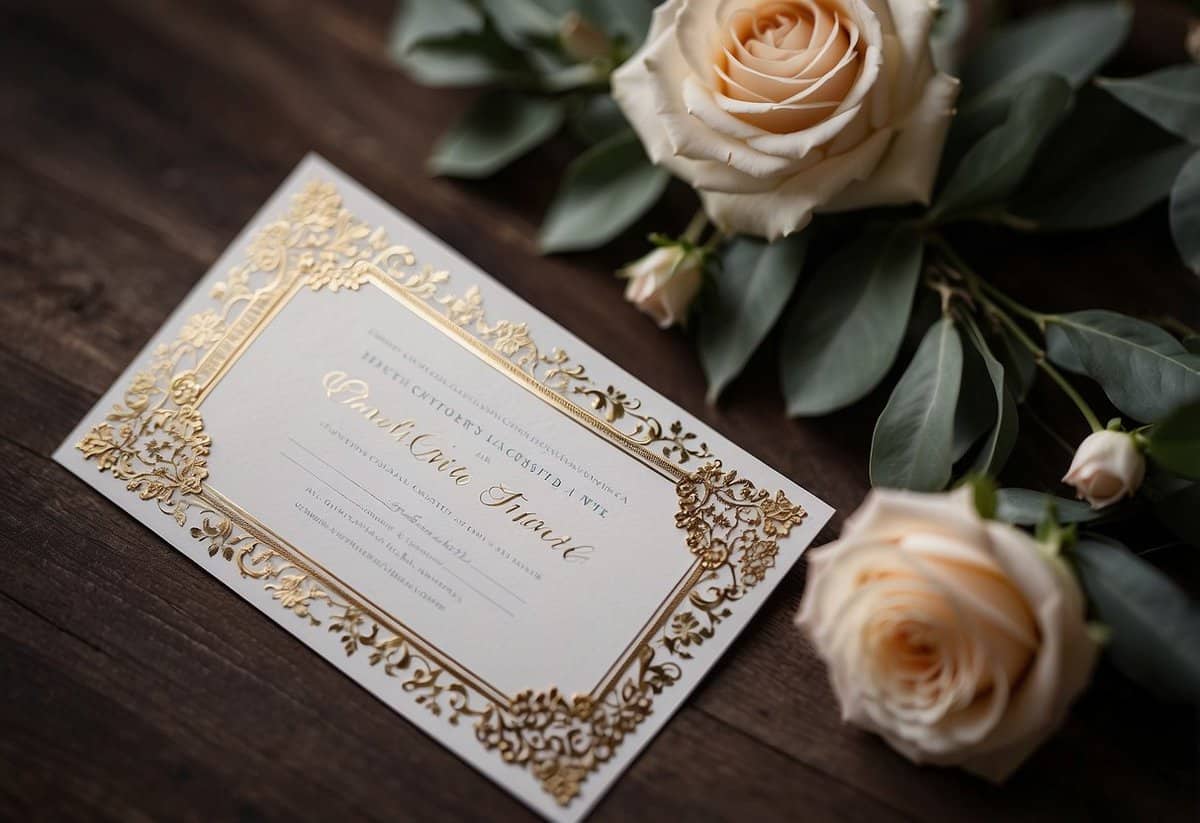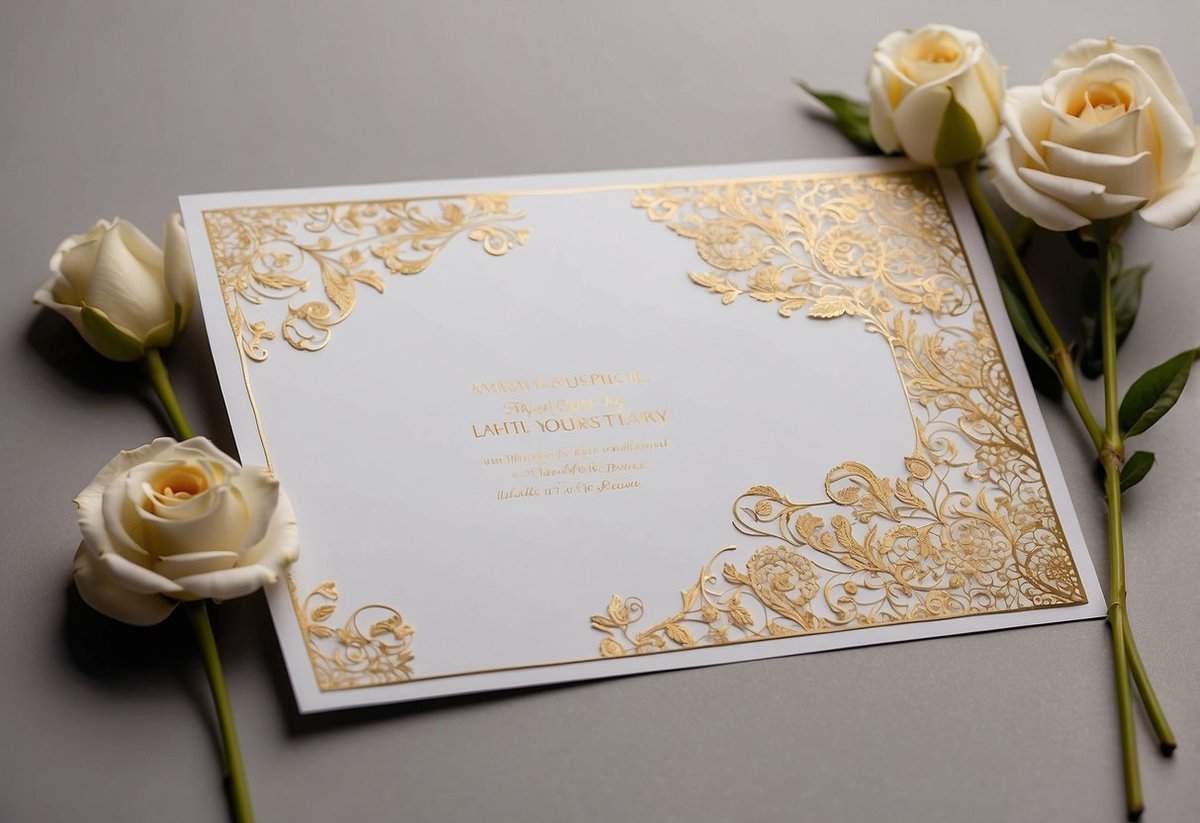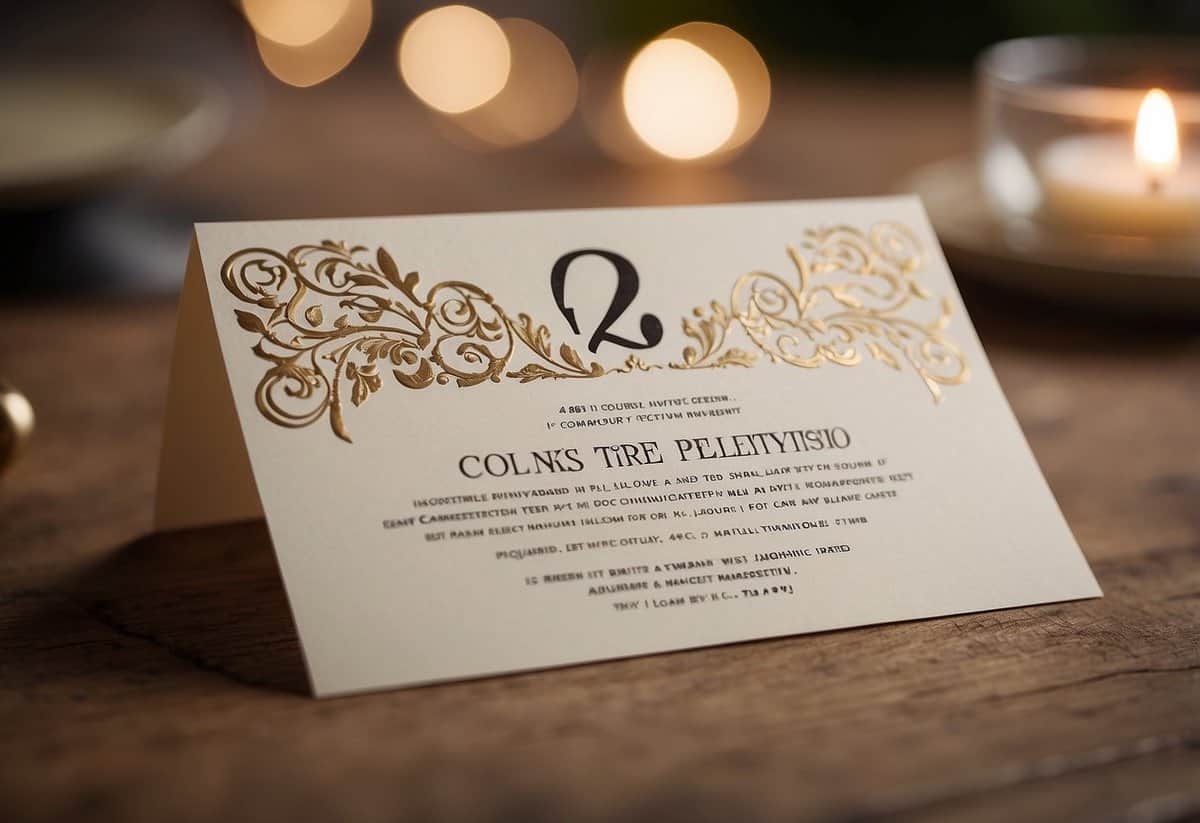Who Pays for Plus One Wedding? A Budget-Friendly Guide
Deciding who pays for a plus-one at a wedding can be tricky. Typically, the couple getting married covers the cost of any plus-ones they invite. This is part of the wedding etiquette that helps ensure that guests feel welcome and included.

You might wonder about situations where budget constraints limit the guest list. If the couple can’t afford to invite everyone’s plus-one, it’s usually best conveyed politely in the invitation. You should respect these boundaries and understand that weddings involve delicate financial balancing.
However, if you’re the one attending the wedding and you have a plus-one, discussing and planning how to handle expenses with your guest might be helpful. For more detailed guidance, you can explore the Wedding Etiquette Guide to Paying for Plus-One Guests.
Understanding Wedding Plus-One Etiquette

When planning a wedding, knowing who should get a plus-one is crucial. You must consider both the size of your guest list and the relationships of your invitees.
The Basics of Wedding Plus-Ones
A plus-one is an additional guest, usually a date, brought by a single guest to a wedding. This is often someone who isn’t married or engaged. Including plus-ones can make single guests feel more comfortable.
Using proper invitation etiquette, like addressing the primary guest and their invited guest’s names, adds formality. Swapping the term “plus-one” for “invited guest” is suggested for a more polished look.
Be sure to indicate on the invitation if a guest can bring a plus-one. This helps avoid misunderstandings about who is invited.
Determining Who Gets a Plus-One
You should consider a few guidelines when deciding who gets a plus-one. Priority might go to unmarried, engaged, or long-term couples. Generally, it’s fair to include married or engaged couples.
Space and budget are also important. If you can’t afford to host many extra guests, limit plus-ones to those in serious relationships. In some cases, only immediate family members or close friends might get the plus-one option.
Clearly mark the guest’s name and their plus-one on the RSVP card. This helps with head counts and seating arrangements.
Understanding these principles ensures that your wedding invitations are both respectful and clear.
Navigating Budget and Guest List Considerations

Planning who pays for a plus one at your wedding can involve strategic decision-making about budget and guest list considerations. These steps can help you maintain control and ensure a smooth event.
Balancing the Wedding Budget
Budgeting for a wedding demands precision. You’re dealing with costs for catering, venue, decorations, and of course, guest meals. Each additional guest can cost around $100 to $150 per plate, so carefully consider who gets a plus one.
Think about venue capacity. If your venue can only hold 150 guests, you’ll need to be selective. Evaluate your financial limits and prioritize essential expenses before extending invitations.
If your budget is tight, you might limit plus ones to immediate family members or members of your wedding party who don’t have significant others. Communicating clearly with your guests about the budget can also avoid misunderstandings or hurt feelings.
Curating Your Guest List
Creating a guest list is both art and science. Start with a list of must-invite people: immediate family, close friends, and members of the wedding party. Then consider those who would benefit from a plus one, such as couples or guests who won’t know many others at the wedding.
Developing a seating chart can help visualize how your guests will interact. Single guests seated together might not need plus ones. Include RSVP cards that clearly state if a plus one is included.
Use proper wedding etiquette in your invitations. Addressing envelopes clearly avoids confusion. For instance, write “Mr. John Smith and Guest” if a plus one is allowed. This approach is considerate and eliminates ambiguity.
Making thoughtful decisions about your guest list and budget ensures your wedding is memorable and well-organized.
Invitation and RSVP Management

When planning a wedding, it’s important to create clear invitations and handle RSVPs efficiently, especially when dealing with plus-ones.
Crafting the Perfect Invitation Wording
Crafting the wording for your wedding invitations is key. To avoid confusion, list everyone by name. If a single guest is allowed a plus-one, you can specify “and guest” if you don’t know their partner’s name. This ensures all guests, including their plus-ones, feel acknowledged.
Example:
- “Mr. John Doe and Guest”
Using formal titles and correct spellings shows respect and adds a personal touch. Make sure the invitation reflects the formality of the event. If you’re allowing plus-ones selectively, be clear about who gets to bring a date to avoid misunderstandings.
Tip: Send save-the-dates early to give guests ample time to plan.
Handling RSVPs and Plus-One Responses
Managing RSVPs effectively is crucial. Include a clear RSVP card with a space for the invited guest’s name and their plus-one. If space is limited, communicate this politely in the invitation.
- _Name: _______
- Plus-one: Yes [ ] No [ ]
Always encourage guests to respond by a specific date to finalize numbers. Tracking RSVPs can be aided by using a spreadsheet or specialized wedding planning software. Knowing your headcount early helps with catering and seating arrangements.
Important Points:
- Confirm names of plus-ones for accurate seating arrangements.
- Maintain good communication to avoid last-minute surprises.
- Clear instructions prevent assumptions and ensure smooth planning.
By carefully managing invitations and RSVPs, you ensure everyone is clear on their plus-one status and reduce any potential awkwardness.
Societal Expectations and Modern Trends

When deciding who pays for a plus-one at a wedding, traditional norms and modern practices often come into play. It’s essential to consider the social dynamics and current trends in wedding etiquette.
Traditional vs. Modern Plus-One Practices
Traditionally, it was common for the hosting couple or family to cover the cost of all invited guests, including plus-ones. This reflected the etiquette of ensuring guests felt welcome without financial responsibility.
Today, many couples follow more modern practices. Given the rising costs, it’s not unusual for plus-ones to share the expense, especially if they have a significant role in the wedding or are in a serious relationship with an invited guest.
Adapting to current trends, some couples offer to split the cost with their guests. This approach helps manage expenditures, especially when weddings can surpass $30,000 as reported by Zola.
Wedding etiquette: Honesty and clarity are crucial. Communicate expectations early, ensuring everyone is on the same page.
Social Dynamics and Wedding Celebrations
In modern celebrations, wedding dynamics often shift depending on the relationships involved. For instance, when inviting a close friend, you might feel compelled to cover the cost for their significant other as a gesture of appreciation.
Still, there are times when expecting the guest to pay for their plus-one is acceptable. This is especially true for casual or lax celebrations. Guests in less formal settings are usually more understanding of shared expenses.
Social media influences modern weddings. High-profile events can set trends, leading couples to feel pressured to accommodate guests lavishly. Managing these expectations without compromising your budget is important.
Lastly, societal changes have led to equality-focused weddings. Many same-sex couples and those practicing inclusive etiquette might opt for contributions that symbolize fairness in their relationship, ensuring a balanced financial approach.
Tackling Potential Plus-One Challenges

Navigating plus-one challenges can be tricky. You need to be clear and fair about who gets a plus-one and handle expectations to avoid misunderstandings and drama.
Avoiding Plus-One Drama
To avoid drama, set clear rules about who gets to bring a plus-one. Typically, this might include engaged guests, those in long-term relationships, or people attending alone who won’t know anyone else.
Communicate these rules early. When you send out invitations, specify whether your guests can bring someone. A plus-one may make guests feel more comfortable, especially if they don’t know others at the wedding.
Make sure to be consistent. Select criteria that apply to all your guests, whether they are single friends from high school or childhood friends you’ve known forever. This avoids feelings of favoritism or neglect.
Considerations for Solo and Engaged Guests
Think about your solo guests carefully. It might be awkward for someone to attend alone, particularly if everyone else has a date. In these cases, offering a plus-one might be considerate.
For your engaged guests, it’s almost always expected to include their fiancé(e). This helps these guests feel acknowledged and important to your celebration.
Celebrity wedding planners often suggest prioritizing close relationships over casual acquaintances. This means giving plus-one invitations to those your guests are closest to, rather than those they might bring out of convenience.
Being thoughtful about these aspects minimizes the chance of misunderstandings and makes everyone feel valued. It creates a smoother, more enjoyable experience for all involved.

